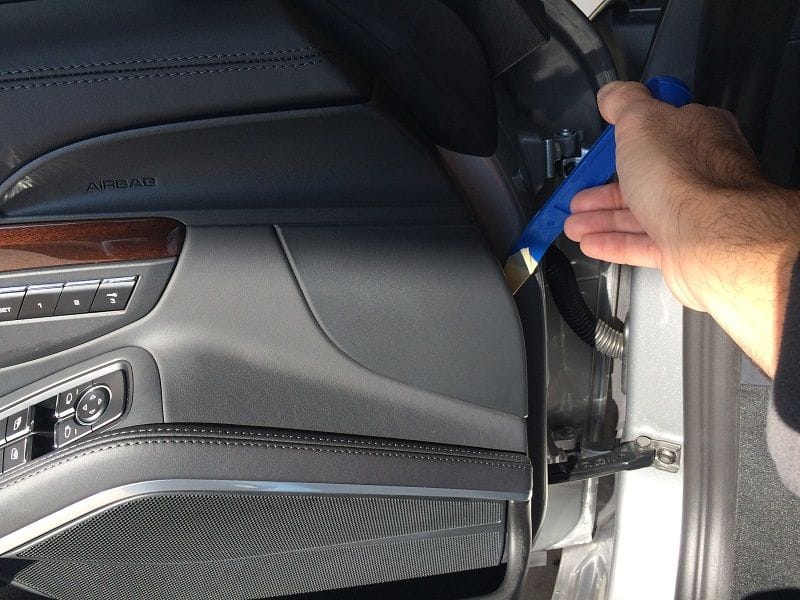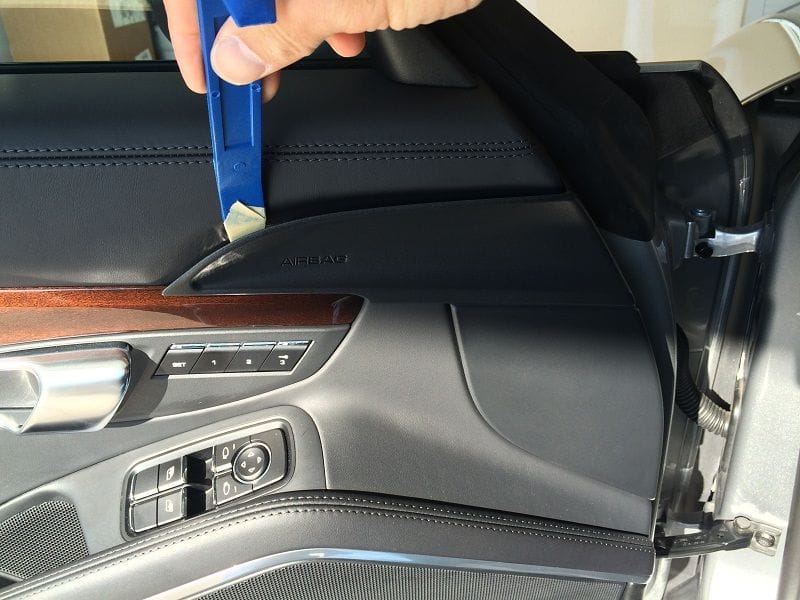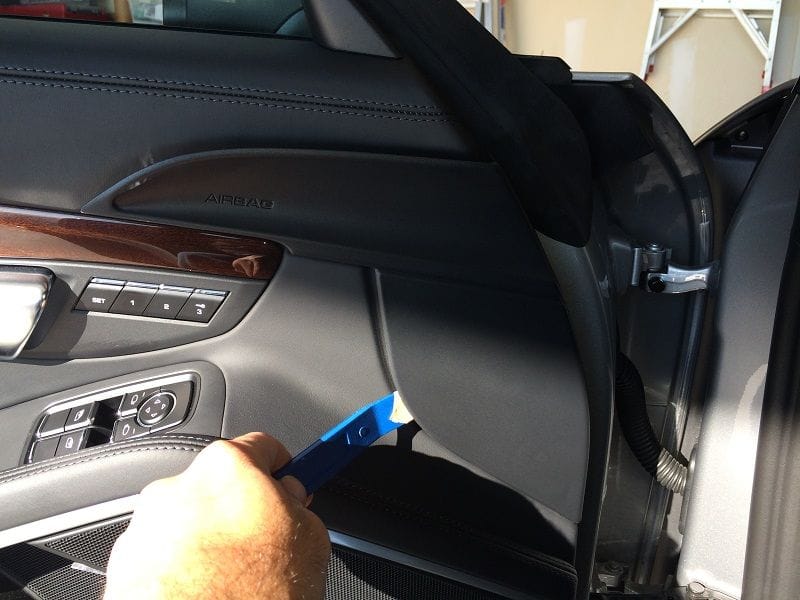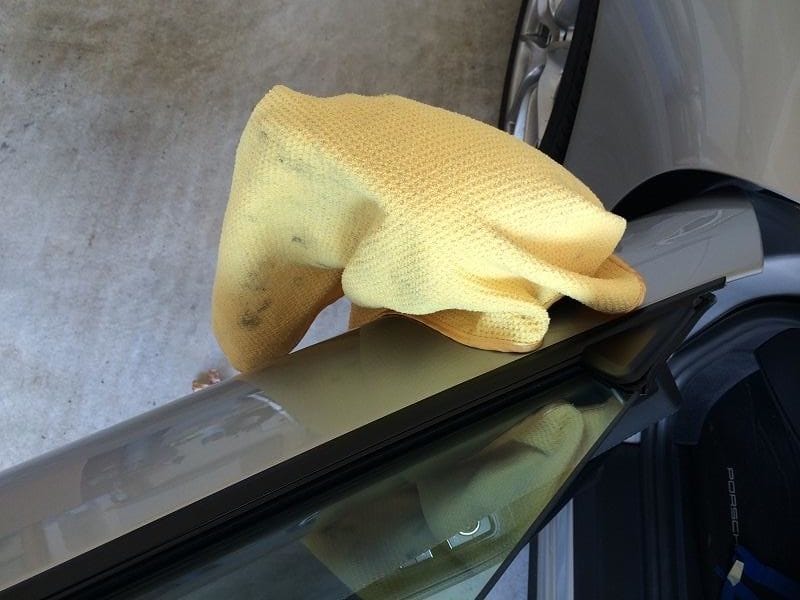 |
| Porsche 991 911 Center Console Switch Unit |
Here's another one for all fellow "tinkerers" out there... I have been thinking about how the 991 center console switches function, and what one might be able to do with the "blanks" that all of the 991 models seem to have (I have seen fewer blanks on a GT3, but nearly all other 991 models have at least 3 blanks in the console switch unit).
What follows is a step-by-step breakdown of the center console switch module from a 991. In this particular case, the donor did not have PSE (Thanks for fellow member for donating!).
My thinking is this... that although the unit is a single controller, we should be able to figure-out how to modify the switches in order to do something with the blank spots, such as build-in custom switches for radar, other accessories that one might want to install.
The challenge in doing anything with this console module? It is a single control board, with various switches mapped and likely programmed specific to the car and its' options (ie when you add PSE they replace the entire switch unit, not just add a single switch).
In the "old days" you could pull a single, isolated switch from the dash or console, and replace with something else, or at least gain direct access to specific wires and such going to the accessory buttons. Nowadays, all of the switches are on a single circuit board, and tie-in to the car network (CAN) through a couple of wires and a connector. So you really can't just move the switches around, remove something and replace with a different function, etc. At least not yet... LOL
Let's get to the deconstruction.
You need to remove the switch module from the center console, so if you haven't already you should review the DIY I posted previously on just how to do this.
So if you've followed the removal DIY, disconnected the cable running to the switch-box, you should be holding the 'black box' at this point. Here is the module sitting on my bench...
 |
This is the "underside" of the switch box.
Note the part #'s S/W and H/W versions |
After you have the module on your bench, flip it over so you are looking at the "bottom."
There are 6 torx head screws that you need to remove, as indicated in the following picture.
 |
| The small screws removed.... |
Using the smallest T bit that I have I removed each one and set aside... These are small, so if you have a tray or even a small plastic sandwich bag you should put them in a safe place. Would hate to lose one of these buggers!
With the screws removed, gently pull-up on the the back-cover and put aside. You'll find as you separate the back from the main assembly that there is a rubber gasket layer sandwiched in there (covering the circuit board) - you'll notice it in the area where my thumb is in the following pic.
Place the back cover aside. In this picture, you can see what you've exposed is a single circuit board.
Now pull-up gently on the circuit board, separating it from the main assembly. Do so carefully, as in the picture below you'll find that there is a spring in the center -- don't lose that!
 |
| Red arrow indicates a small spring in the center of the assembly. |
Have something handy, like a small bowl or plastic bag, to put the small bits in. Place the circuit board to the side.
Since the "top" of the switch box assembly is face-down on your table, you are now looking at the underside of the switch actuators....
 |
I've indicated where the "blanks" are so you can see the difference
between those and the actual "live" switches from the console... |
The first observation about this is that given the space under the dummy switch covers (effectively they are hollow) it is very possible that an aftermarket / custom switch assembly can be added. More on that later.
Let's move over to the circuit board for a moment....
On one side you see the standard green board with some chips and other bits visible. Flip it over and on the other side is a rubber gasket of sorts... You can pull that off - there isn't anything holding it in place that you need to worry about.
The small metal discs correspond to the switch contact points, which in turn are mapped to the corresponding circuits for controlling specific features / functions of the car. This is all via CAN-BUS and programming, so if you were expecting to be able to tap into specific wiring for a switch you are out of luck! These are pressure sensitive contact points, and represent either an ON or OFF state.... The rubber gasket is effectively protecting the circuit board and contacts from any moisture, such as when someone might spill or drip beverages onto the center console. Might make for some sticky buttons, but looks to me like there wouldn't be much chance for shorting or other electrical problems!
Back at the "rear" of the switch console box -- you can remove the three grey assemblies, taking care with the center one which has a spring. The plastic bits literally just fall-out so nothing tricky needed for removal.
In the case of my car the switch buttons are to control the metal sunroof. Open / Close / Partial settings and corresponding buttons. If this were a cab car, I would expect these buttons to control the top open / close functions. In a coupe with NO sunroof option? Not sure what would be there. Probably just blanks.
To remove one of the buttons that are already in place, you will need to push it out from the rear. I used a small micro-screwdriver and gently pushed until it popped-out a bit and I could pull it the rest of the way out.
Here's a pic of the switch face plate or cover removed...
The face plate is a small thin black plastic part with a small hole in the corner (for the red indicator light). NOTE that the face plates are right - or - left side specific. For example, the PSE button can only be installed to the right bank of buttons...
Once you have the switch face plate removed, you can remove the chrome plastic bit from the front of the console box.
In the following picture, you can see the "dummy" or blank button face removed, with the small chrome bit removed from the "real" button just above.
Here you can see the difference in a "dummy" button (circled in red) and "real" or working button (upper space in the pic below) when the faces of the two buttons are removed. In the functioning button, note there is a black "box" of sorts inserted, which when face is on and pressed contacts with the actual contact switch on the circuit board.
You can remove the black plastic "box" in a switch by gently pressing on it from the face side to push it out the back of the console box. And do the reverse if you are inserting a new button....
Following is a pic showing the two buttons on the right that have been completely removed from the switch box.
And from the reverse side....
Pic of the various bits deconstructed and laid-out on the bench.
So, you've deconstructed your center console switch box... What can we do with this information???
Well, I didn't do anything. I simply put it all back together again. But, I now know that if I really wanted to add a "custom" switch integrated to look factory installed I could. It isn't going to be fully-integrated at an electronics communication level (CAN BUS), but a physical integration with the switch face plates. To add a custom switch, you will have to create an access port into the space directly under the switch face plate you are customizing. This means drilling a small hole on the side of the console box and routing your wiring through and into the space directly below the switch box.
Of course, until someone does this and shows in detail, it is just a concept. Couple of other things to know -- You can purchase a switch repair kit from Porsche that includes replacement switch face plates, switch console box, and other bits. I think this currently runs about US $225 or so. Also, this kit is needed whenever an owner adds Porsche Sports Exhaust to their car, as the kit includes the new button to turn the PSE on and off. Here is a pic of the kit (swiped this from an online marketplace):

Note also that the switch repair kit does require a match to your VIN -- in the example pic above, this kit was obviously for a car that is NOT a convertible, and doesn't include the metal or glass sunroof option, since there are no buttons for roof control in the middle of the switch panel. So check your VIN when you order a switch repair kit. And no, getting a kit with the additional buttons DOES NOT mean that by installing you will magically have PDCC, front lift kit, PSE, or a convertible!!!! LOL. These are replacement buttons and other parts, but you will need to get any programming done by the dealer (or independent with the PIWIS tool and the option codes for your car from the factory).
Anyways, this is a LONG post -- sorry all! I've run out of steam. Happy to answer any questions if you want to post them. I also have a spare switch kit that I can dig into in more detail if you have any questions.
Thanks!





















